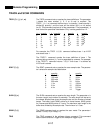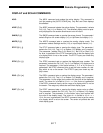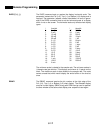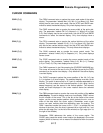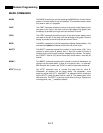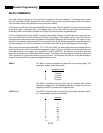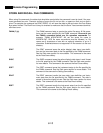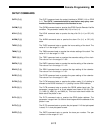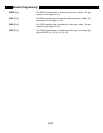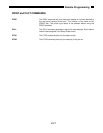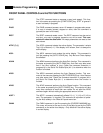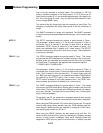
6-18
Remote Programming
STORE AND RECALL FILE COMMANDS
When using file commands, the status byte should be queried after the command is sent to check if the com-
mand generated an error. Common sources of errors are file not on disk, no space on disk, and no disk in
drive. For example, the command line SDAT;ERRS? <lf> will save the data to disk and return the Error Status
Byte when finished. The Disk Error bit may be checked to make sure that the Save Trace command terminat-
ed without error.
FNAM (?) {s} The FNAM command sets or queries the active file name. All file opera-
tions use the name specified by the FNAM command. Be sure to use
the FNAM s command before any file operation commands. For
example, "FNAM MYDATA.DAT" will set the active file name to
MYDATA.DAT. DOS file name conventions must be followed, i.e. file
names are 8 characters or less with an optional extension of up to 3
characters. Subdirectories are not supported. All file access is to the root
directory.
SDAT The SDAT command saves the active display's data trace, trace defini-
tion and the instrument state to the file specified by the FNAM command.
See the Disk menu section for more details. This command is the same
as the Data Save softkey.
SASC The SASC command saves the active display's data trace in ascii format
to the file specified by the FNAM command. See the Disk menu section
for more details. This command is the same as the Ascii Save softkey.
SSET The SSET command saves the instrument setup to the file specified by
the FNAM command. See the Disk menu section for more details. This
command is the same as the Setting Save softkey.
RDAT The RDAT command recalls the trace data, trace definition and instru-
ment state from the file specified by the FNAM command. The data is
stored in the active display's trace. See the Disk menu section for more
details. This command is the same as the Data Recall softkey.
RSET The RSET command recalls the instrument setup from the file specified
by the FNAM command. See the Disk menu section for more details.
This command is the same as the Setting Recall softkey.



